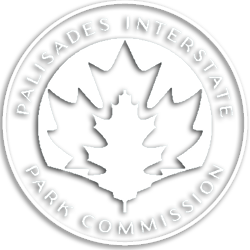Camp Colony
A “Cliff Notes” Story
July 2014
Ross Dock Picnic Area in Fort Lee juts into the Hudson just north of the George Washington Bridge, a broad manmade rectangle of lawn and trees and a big playground. On nice weekends during the warm weather months, it is by far the busiest area in the park; it often fills to capacity by noon. River breezes are spiced by dozens of barbecues and the happy clamor of families at play.
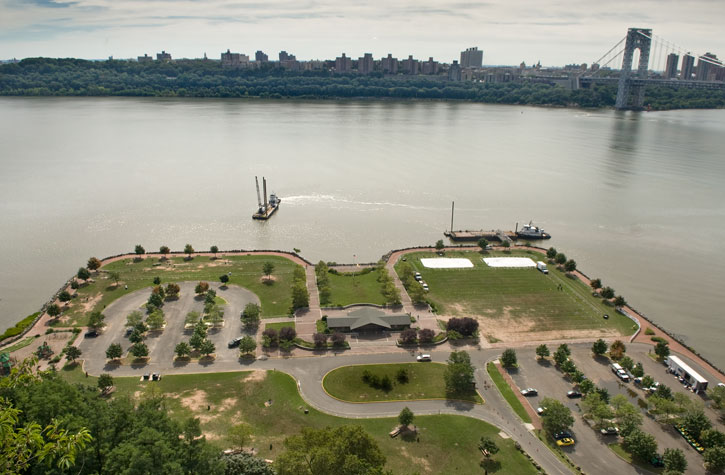
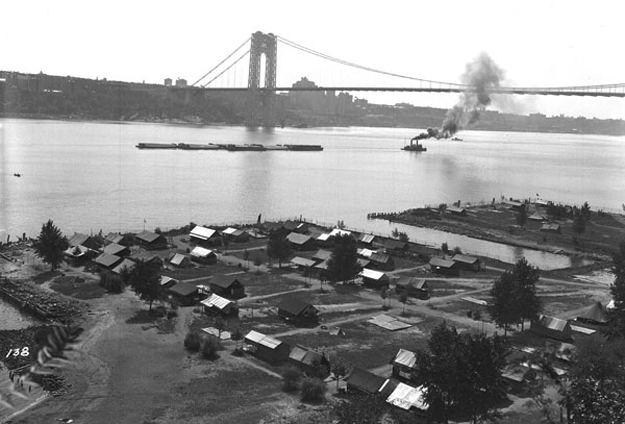
At nightfall, the area is cleared and shut to people. Racoons scavenge the remains of picnics and parties until the garbage truck comes through in the morning.
The Park Commission acquired the property in 1917 from P. Sanford Ross, an investor and “socialite” from Newark. (Ross had bought the property and its riparian rights from William Allison and others in the 1880s, to develop its potential as a stone quarry.) The Park Commission removed the old quarry equipment and, in the 1920s, designated it as a “camp colony.” Big canvas tents were set up on wooden platforms, and the Commission rented them out by the week. By 1922, the Commission issued over a thousand permits a year for families to make Ross Dock their summer vacation spot.
Five years later, in 1927, the Commission worked out a deal with the Port Authority for them to use the site as a workers’ camp during the construction of the George Washington Bridge. As the gargantuan steel bridge rose, the Port Authority paid the Park Commission $3,500 a year to house bridge workers at Ross Dock. During this time, the camp colony remained closed to the public.
The bridge opened in 1931. The camp colony opened the next year, and the Park Commission reported that “Seven hundred and thirty-one permits for camping at Ross Dock were issued … It is estimated that 2,924 persons enjoyed this privilege for periods ranging in length from one week to the entire camping season, May 15th to October 1st. Ross Dock Camp is equipped with many conveniences such as city water, hot and cold showers, sanitary sewerage, street layout, trees and shrubs, a rustic cabin housing the resident camp manager and camp store. The entire area, including private bathing beach, is enclosed by strong wire fence, thus excluding the general public.”
The following year the Commission reported that “this camp is popular with the ‘commuting camper,’ who leaves his family at the camp and commutes to business via the Englewood — Dyckman Street or the Hazzards Beach — 158th Street Ferry.”
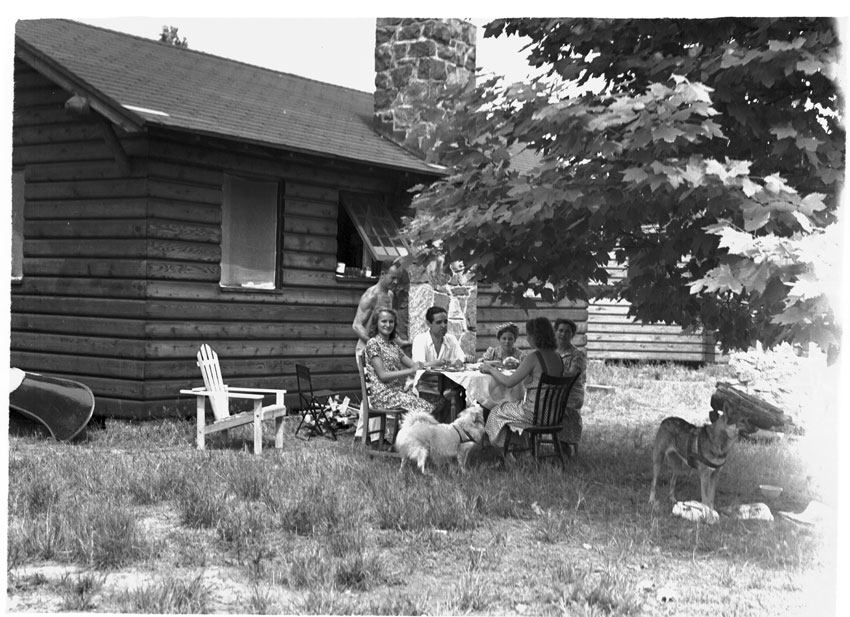
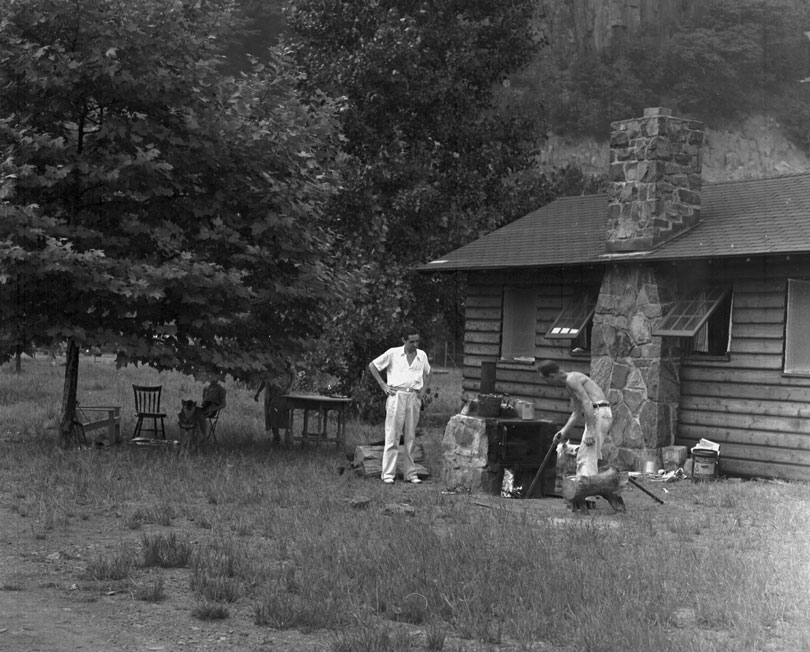
Last year, in 2013, we got an email from a man — we’ll call him Henry — who wanted to share his recollections of Ross Dock with us. “I am now 85 years old,” he wrote, “but remember the years, prior to World War Two, when our family, along with many, many others, paid $3.00 a month to erect and maintain tent sites at Ross [Dock], on the Jersey side of the Hudson. … At the end of the season, after Labor Day, we would drop the canvas tops down on the wooden side walls, lash them down securely, and leave till the next year, to again enjoy the facilities. …
“There was a log-cabin store,” the note continued, “where the campers could purchase non-perishables, candy, etc. My favorite was Cracker Jack — if I was ever fortunate enough to get 5 cents to spend.”
Still, the Park Commission saw a drop in attendance in the next years. They determined it was because “the public now demands cabins or bungalows.” Between 1936 and 37, using allotments and labor from the Works Progress Administration (WPA), the Commission was able to replace the platform tents with thirty “three-room rustic cabins.”
Henry also remembered the cabins. “I loved the huge stone fireplace,” he remembered.
America’s entry into World War Two in late 1941 had a profound effect on all of the park’s facilities, including at Ross Dock. In 1943, the Commission reported that the Ross Dock camp colony was “now closed to the public for the duration of the war, due to the decrease in demand for such facilities. The lack of interest in this camp during 1942 is attributed to the cessation of ferry service from Dyckman Street, New York, and to the fact that persons ordinarily using this area for vacation periods did not have the usual vacations because of war employment.” The Commission also noted that “on a number of occasions during the 1942 season, Ross Camp was used by the U.S. Army for troop encampments.”
In 1944, “the former Ross camping area was restored to a picnic area.” The cabins were torn down, just their chimneys left to stand for a few more years; at last they too were removed.
Henry’s email also reminded us that even in the depths of the Great Depression — when the camp colony flourished, providing a respite from the crisis — there were those who enjoyed the high life. On the cliffs high above the camp colony, Ben Marden’s famous Riviera Nightclub stood beneath its big neon sign. Most of the best musical acts of the day played the Riviera, beneath a roof that could be retracted for starlight dancing. Down at Ross Dock, Henry remembered, “every night we would hear the wonderful music drift down the side of the cliff…”
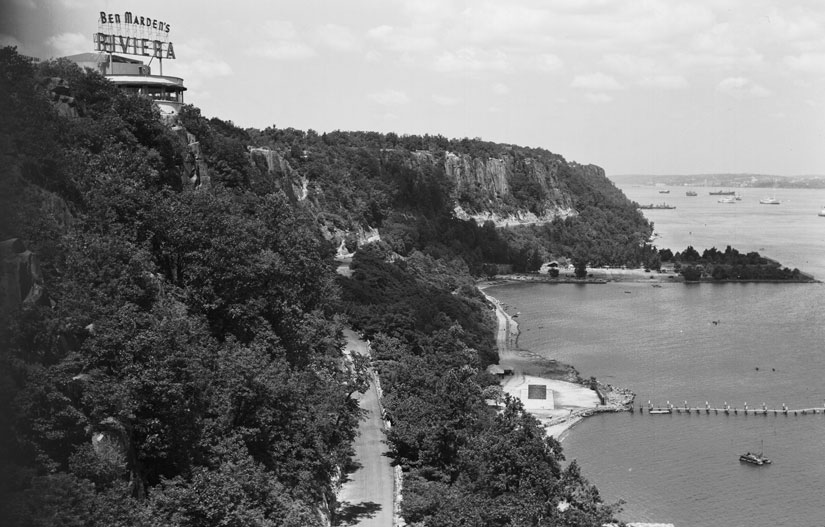
– Eric Nelsen –

